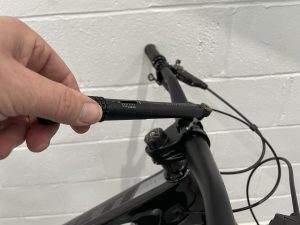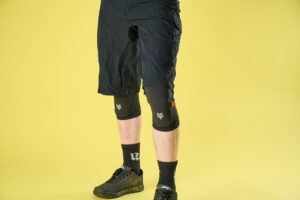Direct-sales brand’s aluminium full-susser flies high with on-trend geometry and a myriad of configurations
Bird Aeris.1 X1 review
Bird MTB is a relatively new brand that is exploiting the direct-sales model to deliver lower prices. The twist is, it operates out of the UK — just down the road from us, in Hampshire — and although the frames are manufactured in the Far East, all the bikes are assembled right here in Britain.
Equally unusual — in sheer quantity of choice, if not in concept — is the option to customise your Bird’s plumage. Apparently there are 12,000 permutations of this bike, the Aeris, with options from Bird’s extensive menu of parts to change everything from the shock to the grips.
We tested Bird’s hardtail, the Zero, back in the August 2014 issue, but this is our first look at the company’s full-suspension offering, the Aeris.
The aluminium frame is attractively compact and purposefully stout, with chunky welds and a low-slung top tube that affords plenty of standover clearance.
Not having the seamless appearance of some rival brands’ aluminium frames gives it a lack of sleekness, but as a first attempt at a full-suspension bike, Bird has done respectably well; the Aeris looks good.
Its geometry is refreshingly contemporary too, with a relatively slack head angle, a long front centre and a low bottom bracket.
With four sizes on offer, from S up to a generous XL, it will happily accommodate riders who are over six-feet tall. I rode a medium and, for once, didn’t immediately feel like I should have upsized.
To give the Aeris a bit of extra tunability, there are two shock positions on the swing link. In the bottom hole, you get 140mm of travel. Raise it and that figure increases by 10mm. This also affects the kinematics; the short-travel mode offers more compliance and less progression.
There are four shocks to choose from, of which we sampled both the Cane Creek DB Inline and the RockShox Monarch RT3. While the DB Inline is an upgrade, on the trail, there was no competition — the Cane Creek seemed half-asleep, despite running minimal damping. The Monarch was far livelier, particularly in that all-important initial phase of the travel when finding grip, and still gave plenty of support.
Riding along, the Aeris pedalled well, even without engaging the compression platform. This, coupled with the aggressive geometry, helped the Bird to soar, delivering confidence-inspiring descending and sure-footed cornering.
>>> Click here to find out more about geometry with our handy guide
















